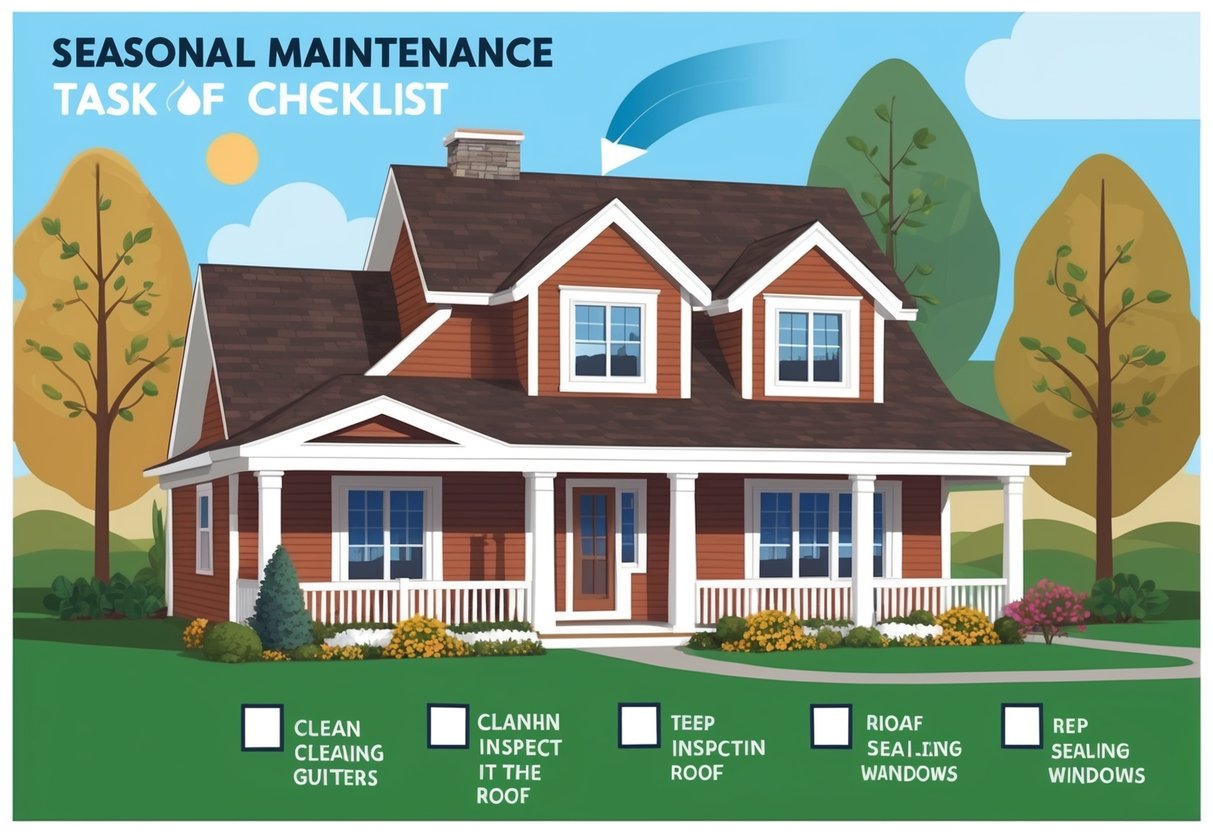
Protecting Your Home from Water Damage

Moisture intrusion can lead to costly structural problems, mold growth, and long-term foundation issues. Reducing water risks calls for careful attention to basement moisture control, leak detection, and robust sealing measures throughout the structure.
Maintaining a Basement Dry Environment
A consistently dry basement reduces the risk of mold, mildew, and costly foundation repairs. Homeowners should use a multi-layered approach including installing a sump pump, maintaining gutters and downspouts, and ensuring the ground slopes away from the foundation.
Proper gutter cleaning in spring and fall is especially critical to divert rainwater effectively, as highlighted in seasonal maintenance guides from reputable sources. A dehumidifier can help maintain humidity levels below 60%, discouraging mold growth.
Regularly checking for condensation on walls or windows is another important step. Ensure any basement windows are properly sealed, and if cracks are found in floors or walls, address them with concrete sealant or professional repair.
Inspecting for Plumbing Leaks
Plumbing leaks can develop from worn hoses, pipe joints, or aging fixtures. Routine inspection is necessary to prevent hidden water damage.
Look for signs like damp spots, musty smells, increased water bills, or corrosion around pipe connections. Check under sinks, behind toilets, and around appliances such as dishwashers and washing machines.
Every few months, inspect visible pipes for drips or “sweating.” Test water pressure, as unusually high pressure strains connections.
Addressing minor plumbing issues quickly is key to preventing extensive repairs. Advice from seasonal checklists stresses the importance of proactive leak detection.
Sealing Windows and Doors
Windows and doors are common paths for moisture intrusion. Inspect every window and door for drafts, cracked glass, or worn weatherstripping.
High-quality weatherstripping should be installed or replaced to create a tight seal. Pay close attention to corners and frames, which often show early signs of breakdown.
Storm windows and doors offer added protection. During rainy weather, watch for leaks or stains on the inside of the window or door frames.
Choose durable, weather-resistant seals to maximize energy efficiency and keep your home maintenance routine effective in protecting interiors from rain and snow.
Applying Caulk Where Necessary
Caulk provides a flexible barrier against gaps where water might enter. Regular inspection of caulking around windows, doors, and exterior joints is essential.
Apply fresh caulk if existing lines are cracked, shrinking, or missing—especially before the wet season begins. Select mold-resistant, exterior-grade caulk for outdoor applications.
When applying, make sure the surface is clean and dry for the best adhesion. Common areas that need attention include siding joints, door frames, and areas around outdoor faucets.
Re-caulking as part of annual home maintenance helps extend the life of weatherstripping and window seals while ensuring a dry environment year-round. For a step-by-step approach, see lists provided on reputable home maintenance sites.
Ensuring Fire and Carbon Monoxide Safety
Homeowners can significantly reduce risks by paying ongoing attention to smoke detectors and carbon monoxide detectors. Regular testing, replacement, and battery changes help prevent malfunctions that may lead to dangerous situations.
Testing Smoke Detectors
Testing smoke detectors is a straightforward task that should be done monthly. Press the “test” button on each unit until the alarm sounds.
If the alarm is faint or doesn’t sound at all, immediate attention is needed. It’s important to test every smoke detector in the home, including those in bedrooms, hallways, basements, and attics.
A working smoke detector can reduce fire-related deaths by half, according to seasonal home maintenance checklists. Homeowners should also visually inspect detectors for dust build-up or obstructions and gently vacuum around vents to keep sensors clear.
Testing should always involve notifying household members to avoid panic, and the loudness of the alarm should be audible in every part of the home. Contact a qualified technician if battery replacement or cleaning does not resolve issues.
Replacing Carbon Monoxide Detectors
Carbon monoxide detectors play a vital role in home safety. These devices alert occupants to the presence of a colorless, odorless gas that can cause illness or death.
Carbon monoxide detector replacement is often overlooked, but most need to be replaced every 5 to 7 years as they lose sensitivity over time. Homeowners can find the expiration date or manufacturing date on the back or side of each unit.
If the date has passed or the device no longer responds to testing, prompt replacement is necessary. New models should be installed according to manufacturer directions, ideally on each level of the home and near sleeping areas.
A detailed home maintenance checklist includes replacing carbon monoxide detectors to ensure ongoing protection. Don’t rely on these devices indefinitely—set a reminder to check each year.
Changing Batteries Regularly
Most smoke detectors and carbon monoxide detectors use AA or 9V batteries. Batteries should be changed at least once a year, but it’s best to follow manufacturer recommendations, as some models may require more frequent changes.
For many, changing batteries when clocks change for daylight saving time is a helpful habit. Many experts and seasonal home maintenance guides advise using only the batteries specified by the manufacturer.
After replacing batteries, always test the device to ensure it’s working properly. Store spare batteries in an easily accessible location.
If a detector starts to chirp or signal a low-battery warning, replace batteries immediately. Never remove batteries without a prompt replacement to avoid gaps in home safety coverage.
Seasonal Exterior Maintenance Tasks
Routine exterior maintenance is necessary to prevent water intrusion, reduce deterioration, and protect property value. Regular attention to siding, walkways, driveways, and landscaping can help homeowners avoid expensive repairs and keep their homes in top condition.
Inspecting Siding and Paint
Checking exterior siding for damage, such as cracks, warping, and mold, should be done at least once per season. These issues often allow moisture to penetrate, leading to rot and structural problems.
Homeowners should look for chipped or peeling paint, as fresh paint acts as a barrier against weather. Power washing siding is recommended to remove dirt, mildew, and algae, especially after winter or rainy months.
After cleaning, any needed home improvements, including siding repair or paint touch-ups, should be addressed promptly. Sealing gaps around windows and doors further prevents drafts and water leaks, which are common sources of damage.